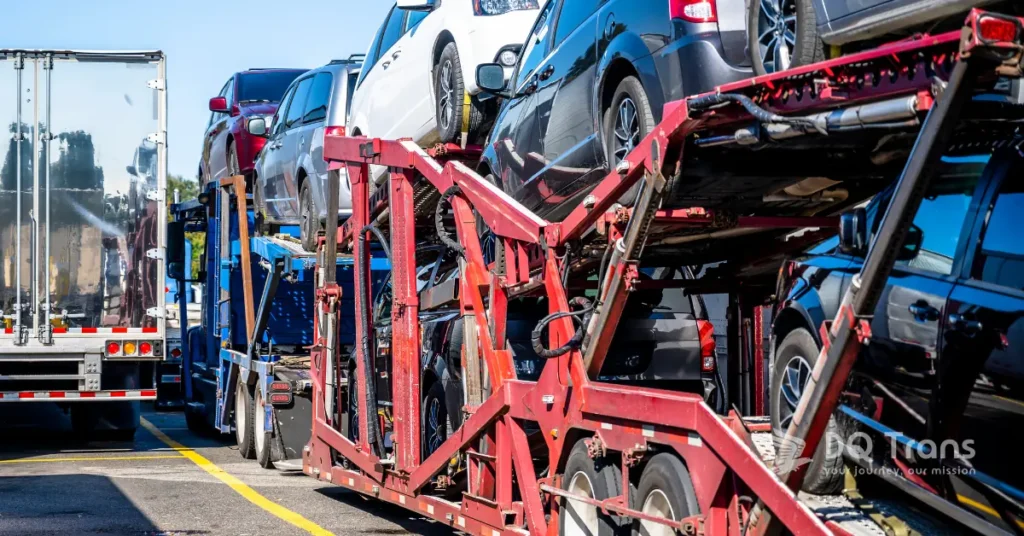Shipping a car across the country or even state to state is common today. Families relocate, students move to school, and buyers purchase vehicles online. Auto transport saves time and mileage, but the process is not always simple.
When people rush into car shipping without understanding the basics, mistakes happen. Wrong carrier choice, poor paperwork, and weak preparation create delays, unexpected costs, and even damage.
This guide covers seven costly errors people make when transporting a car—and how you avoid them. Each mistake is explained in detail with simple fixes. You’ll also see how to prepare your car, what to expect during pickup and delivery, and how to keep your shipment secure with the right paperwork.
By the end, you’ll know the exact steps that protect your vehicle, your wallet, and your peace of mind.
Error 1 — Choosing the Wrong Type of Transport
The most common decision is between open transport and enclosed transport.
- Open transport is cheaper and widely available. Cars travel on two-level trailers exposed to weather and road debris. It works for daily drivers and standard vehicles.
- Enclosed transport shields cars inside a covered trailer. It is more secure but more expensive. Best for luxury, exotic, or collectible vehicles.
Cost difference: Open shipping often runs 30–40% less than enclosed. Example: A sedan shipped open from Texas to California might cost $1,100, while enclosed could be $1,500+.
Mistake: Many customers pick the lowest quote without considering vehicle type or value. A high-end car exposed on an open hauler is at risk.
Fix: Match transport type to your car’s value and your risk tolerance. If the car is a daily driver, open works. If it’s a luxury model, enclosed is worth the higher cost.
Error 2 — Not Verifying Carrier Credentials and Insurance
Every legal auto transport carrier in the U.S. must have a USDOT number and MC number registered with the FMCSA.
Mistake: Customers book with carriers or brokers who cannot prove active authority or valid insurance. This exposes you to scams and liability.
Fixes:
- Look up the carrier in the FMCSA SAFER database. Confirm USDOT and MC are active.
- Ask for a certificate of insurance listing cargo coverage. Liability insurance is not enough.
- Avoid companies unwilling to share paperwork or answer direct questions.
Example: A customer in Florida checked a low-cost quote against FMCSA records and found the company had inactive authority. By skipping that carrier, they avoided a scam.
Error 3 — Expecting Exact Pickup and Delivery Times
Reality: Car transport uses pickup and delivery windows, not precise times.
Drivers must follow Hours of Service rules:
- Up to 11 hours of driving after 10 hours off duty.
- A 14-hour work window per day.
- A 30-minute break after 8 hours of driving.
Weather, traffic, and previous stops shift schedules.
Mistake: Customers demand an exact delivery hour and get frustrated by changes.
Fix: Expect a pickup window (2–3 days) and a delivery window (3–7 days) depending on distance. Stay flexible, keep your phone available, and share a backup contact.
Example: A Midwest snowstorm delayed a delivery by 24 hours. The customer accepted the change, saving unnecessary conflict with the carrier.
Error 4 — Poor Vehicle Preparation Before Pickup
Preparation protects both you and the driver.
Checklist:
- Wash the exterior so inspection notes are accurate.
- Remove personal items—most carriers prohibit extra belongings.
- Set fuel to about ¼ tank. Enough to load/unload, not more.
- Disable alarms and remove toll tags.
- Take time-stamped photos of all sides, interior, wheels, roof, and close-ups of existing scratches.
Mistake: Customers skip photos and arrive at delivery unable to prove a scratch was new.
Fix: Keep a dated photo folder and compare it to the Bill of Lading (BOL).
Example: A customer documented their SUV before pickup. At delivery, a bumper scratch was noted. The photos proved it was new damage, and the carrier’s insurance covered repairs.
Error 5 — Ignoring Access Limitations for Door-to-Door Service
“Door-to-door” means pickup and delivery as close as possible to your address.
Limitations:
- Large haulers need wide streets and space to turn.
- Low trees, power lines, or HOA rules can block access.
- Drivers sometimes arrange to meet at a nearby parking lot or wide road.
Mistake: Customers assume the truck will always reach their driveway.
Fix: Discuss access with the carrier in advance. Share gate codes, HOA rules, or alternative meeting points.
Example: A customer in a gated community met the driver at a nearby shopping center. Pickup was smooth, no delays.
Error 6 — Not Disclosing Vehicle Condition Accurately
Transporting a car depends on its operability.
- Operable vehicles: Start, steer, and brake normally.
- Inoperable vehicles: Require a winch and extra labor. Additional fees apply.
Mistake: Customers fail to mention their car does not run. Drivers arrive unprepared, causing delays and added charges.
Fix: Disclose condition honestly at booking. Share notes on brakes, steering, battery cutoff, or modifications (roof racks, oversized tires, lowered suspension).
Example: A car listed as “operable” had a dead battery. The driver couldn’t load it and had to return with extra equipment.
Error 7 — Weak Paper Trail for Inspections and Claims
The Bill of Lading (BOL) and Proof of Delivery (POD) are your protection.
Mistake: Customers sign paperwork without reviewing condition notes. At delivery, they cannot prove damage occurred during transit.
Fixes:
- Compare pickup photos with delivery photos.
- Review the BOL before signing. Ensure all pre-existing scratches are marked.
- At delivery, inspect before signing the POD. Note any new damage on the form.
Example: A customer spotted a new door dent at delivery. Because they noted it on the POD and had photos, their claim was approved.
Conclusion (≈150 words)
Car shipping is straightforward when you plan correctly. The most common mistakes—wrong carrier choice, poor preparation, or weak paperwork—are avoidable with a simple checklist.
By choosing the right type of transport, verifying carriers, preparing your car, and keeping a paper trail, you protect your vehicle and your money.
The key is to set clear expectations and stay proactive. With these steps, your car arrives safely, on time, and with no surprises.
FAQs
1. How long does car shipping usually take?
Cross-country moves (2,500 miles) take 7–10 days. Shorter routes (500 miles) can be 1–3 days. Always expect windows, not exact hours.
2. Should I ship open or enclosed?
Open is cheaper and fine for most cars. Enclosed protects from weather and debris, ideal for luxury or high-value cars.
3. Can I put personal items in my car?
Most carriers prohibit it. Extra items risk damage and add weight, which can cause fees or DOT issues.
4. How much does auto transport cost?
Cost depends on distance, season, trailer type, and vehicle condition. Typical ranges: $0.60–$1.00 per mile long-distance, $1.50–$2.00 per mile short-distance.
5. How do I know my carrier is legitimate?
Check USDOT and MC numbers in the FMCSA database. Ask for proof of insurance.
6. What happens if my car is damaged?
Document at delivery, note it on the POD, and file a claim with photos and paperwork.


